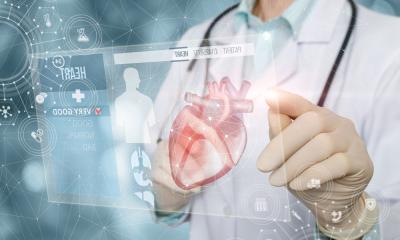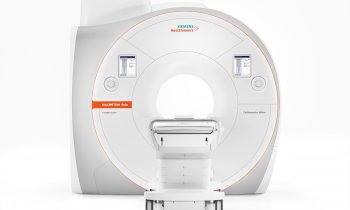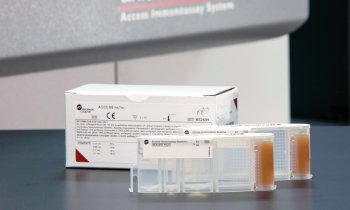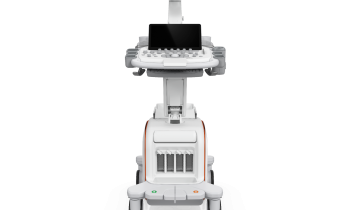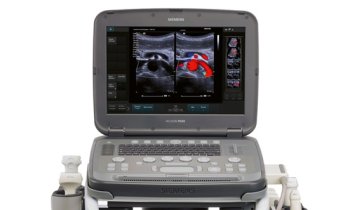© bluebay2014 – stock.adobe.com
Article • Diagnostic and care support
Atrial fibrillation: digital technology to the rescue?
Machine learning (ML) for personalised care, large language models for empathy training of cardiologists, wearable sensor data for better screening, and more: Digital technologies hold great potential to improve diagnosis and treatment of patients with atrial fibrillation (AF). At the ESC 2024 cardiology congress in London, four experts explored the benefits of new solutions and pointed out challenges for their implementation.
By Mark Nicholls

In her presentation, cardiac electrophysiologist Dr Tina Baykaner said: ‘Machine learning can identify those patients with AF that do not yet have a clinical diagnosis of AF or are at risk for developing AF in the future. It can also identify those who might suffer complications of AF, those who might, or will not benefit from various AF treatment strategies such as catheter ablation.’ The expert from the Division of Cardiovascular Medicine at Stanford University, discussed the approaches for training AF-related ML models and pointed to research demonstrating that such models work better than existing prediction scores.1,2 ‘This may impact our decisions in selection of appropriate therapies and customise follow up to the patients’ needs,’ she added.
Prediction at the flip of a coin?
Turning to risk scores such as CHA2DS2-VASc3 or APPLE4 – which include demographics, clinical co-morbidities, valvular heart disease, kidney disease or AF specific metrics – she indicated that these did not perform well enough for day-to-day clinical practice use. ‘The predictive accuracy of these models is about 0.5 – that is about the same as the flip of a coin. We need a model that has much better discriminatory power than the existing clinical scores and that is where machine learning can come in,’ said Baykaner.
Recommended article

Article • Research, diagnostics, therapies
Focus on Cardiology
Arrhythmias, valve defects, heart attacks: Cardiologists face a wide range of disorders and diseases. Equally diverse are diagnostics and therapeutic options. Find out what the field has to offer.
‘Machine learning models can have a big role in personalising care of AF patients and that could be in risk stratification for developing adverse outcomes and have a big role in personalising treatment decisions. That can include medication or catheter ablation, which patients will do well and which will absolutely not do well. Lastly, machine learning will have a big role in screening and diagnosis in patients where we do not know that they have AF.’

Professor David Duncker from the Hannover Heart Rhythm Center in Germany concentrated on the state-of-the-art in personalising care in atrial fibrillation. He underlined the importance of educating patients yet also retaining empathy with them and involving a multi-disciplinary team in the process. As well as catheter ablations and energy sources, he said digital tools are also needed to individualise treatment – to choose the right strategies at the right time for the right patient as cardiologists see patients in different stages of AF. ‘We know we are talking about a pandemic of atrial fibrillation and will have increasing numbers in the next few years,’ said Duncker. ‘We will need to think about improving care for our patients but also improving our use of resources.’
Using chatbots for empathy training
He said AI will be needed to improve clinical care with large language models such as ChatGPT adding support, though he said caution was still required in their use.5 ‘We can train a robot or AI machine to give empathetic answers.6 Maybe we can use this AI to train future doctors to talk to patients in a way that they feel their empathy,’ he added. ‘We should see this as an opportunity to train ourselves.’ Duncker said personalised care in AF is needed to improve outcomes, tailor treatment, adapt to individual risk profiles, enhance efficacy, reduce adverse events and optimise resource utilisation.

Professor Emma Svennberg from the Karolinska Institute in Stockholm, Sweden, said a challenge for healthcare professionals is the ‘abundance of wearable technologies’ patients bring to clinics and making sense of their different readouts. She said it is useful to divide the mobile technologies into ECG-based and non-ECG based technologies that mostly use PPG (photoplethysmography).
In her presentation, she cautioned that while the accuracy of PPG devices might be improving7, current studies mostly cover homogeneous, and younger, populations.8 However, when older patients use PPG and smartphone-based technologies to screen for AF, and particularly when patients take devices home, there is a much higher rate of detection.9 ‘Overall, from studies using prolonged ECG-based screening that is non-invasive, we see a significant increase in AF detection.10 However, more studies are required to determine if screening can lead to a reduction in stroke,’ Svennberg concluded.
Elderly patients at risk of being left behind
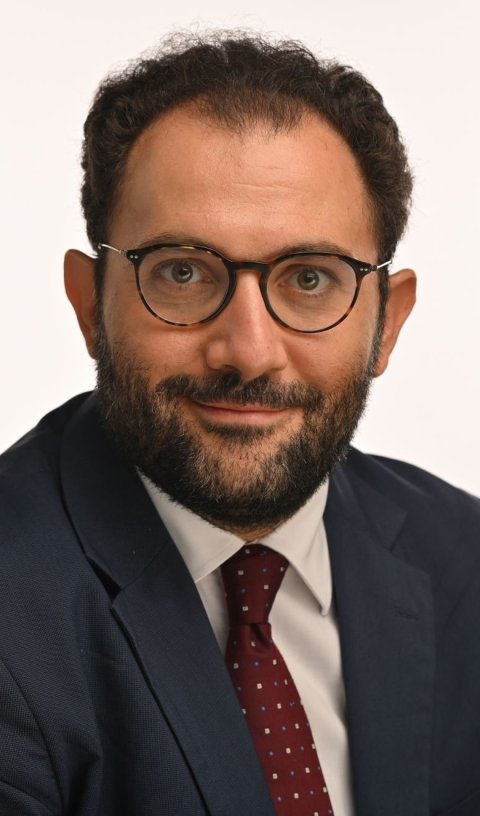
Marco Proietti, Associate Professor of Internal and Geriatric Medicine at the University of Milan, Italy, discussed the use of digital health technologies to integrate the care of AF. He noted that barriers remain to implementation of mHealth Apps in AF integrated care.11 These include lack of access to smart devices and wi-fi connection, digital literacy12, decreased sensory capacities and cognitive function, systemic organization and regulatory and ethical issues.
He concluded: ‘The use of integrated care strategies in AF patients, facilitated by the use of smartphone app-based algorithms, can reduce the burden of risk factors, reduce the utilisation of healthcare resources and the risk of major clinical outcomes. However, further data are still needed regarding the large implementation of digital health technologies in AF patients to strengthen the evidence to more solidly support the large application of these technologies.’
Profiles:
Dr Tina Baykaner is an Assistant Professor in the Department of Internal Medicine, Division of Cardiovascular Medicine and Electrophysiology at Stanford University, USA. Her current research interests include outcomes research, epidemiology and mechanisms of rhythm disorders.
Cardiologist and electrophysiologist Professor David Duncker is head of Hannover Heart Rhythm Center at the Department of Cardiology and Angiology at Hannover Medical School, Germany. He is an EHRA board member and chair of the EHRA Digital and mHealth committee 2024-26.
Dr Emma Svennberg is an associate professor in Cardiology, and treasurer of the EHRA, where she is part of the executive board. The founding chair for the EHRA Digital Committee, she combines her work as a physician in the department of electrophysiology at Karolinska University Hospital in Stockholm, Sweden, with research in arrhythmias. Her main research interest is mainly in screening for AF to detect the disease early and try to prevent strokes.
Marco Proietti is Associate Professor of Internal and Geriatric Medicine at University of Milan and Deputy Chief at the Division of Subacute Care of IRCCS Istituti Clinici Scientifici Maugeri, Milan, Italy. His main research interests are about epidemiology, clinical management and treatment of cardiovascular diseases, in particular atrial fibrillation.
References:
- Kistler PM et al.: Effect of Catheter Ablation Using Pulmonary Vein Isolation With vs Without Posterior Left Atrial Wall Isolation on Atrial Arrhythmia Recurrence in Patients With Persistent Atrial Fibrillation: The CAPLA Randomized Clinical Trial; JAMA 2023; https://doi.org/10.1001/jama.2022.23722
- Reddy VY et al.: Pulsed Field or Conventional Thermal Ablation for Paroxysmal Atrial Fibrillation; New England Journal of Medicine 2023; https://doi.org/10.1056/nejmoa2307291
- Jacobs V et al.: The impact of risk score (CHADS2 versus CHA2DS2-VASc) on long-term outcomes after atrial fibrillation ablation; Heart Rhythm 2025; https://doi.org/10.1016/j.hrthm.2014.12.034
- Kornej J et al.: The APPLE score: a novel and simple score for the prediction of rhythm outcomes after catheter ablation of atrial fibrillation; Clinical Research in Cardiology 2025; https://doi.org/10.1007%2Fs00392-015-0856-x
- Hillmann HAK et al.: Accuracy and comprehensibility of chat-based artificial intelligence for patient information on atrial fibrillation and cardiac implantable electronic devices; Europace 2024; https://doi.org/10.1093/europace/euad369
- Ayers JW et al.: Comparing Physician and Artificial Intelligence Chatbot Responses to Patient Questions Posted to a Public Social Media Forum; JAMA Internal Medicine 2023; https://doi.org/10.1001/jamainternmed.2023.1838
- Fernstad J et al: Validation of a novel smartphone-based photoplethysmographic method for ambulatory heart rhythm diagnostics: the SMARTBEATS study; Europace 2024; https://doi.org/10.1093/europace/euae079
- Gill S et al: Smartphone detection of atrial fibrillation using photoplethysmography: a systematic review and meta-analysis; Heart 2022; https://doi.org/10.1136/heartjnl-2021-320417
- Rizas KD et al.: Smartphone-based screening for atrial fibrillation: a pragmatic randomized clinical trial; Nature Medicine 2022; https://doi.org/10.1038/s41591-022-01979-w
- Elbadawi A et al.: Screening for atrial fibrillation in the elderly: A network meta-analysis of randomized trials; European Journal of Internal Medicine 2022; https://doi.org/10.1016/j.ejim.2022.07.015
- Cajita MI et al.: Facilitators of and Barriers to mHealth Adoption in Older Adults With Heart Failure; Computers, Informatics, Nursing 2018; https://doi.org/10.1097/cin.0000000000000442
- Boriani G et al.: Digital literacy as a potential barrier to implementation of cardiology tele-visits after COVID-19 pandemic: the INFO-COVID survey; Journal of Geriatric Cardiology 2021; http://dx.doi.org/10.11909/j.issn.1671-5411.2021.09.003
18.06.2025





